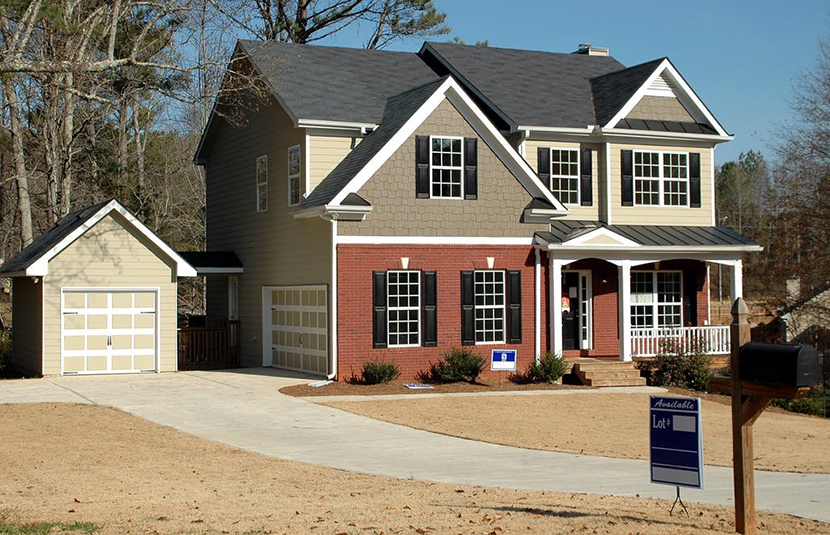
Millennial Homeownership ‘Delayed, Not Denied’

Despite the economic effects of the coronavirus pandemic, millennials appear poised to fuel a “Roaring ’20s” of homeownership demand, said First American Financial Corp., Santa Ana, Calif.
The company’s annual Homeownership Progress Index, which measures how lifestyle, societal and economic factors influence homeownership rates over time at national, state and market levels, found potential homeownership demand increased by one percentage point in 2019 from a year ago.
The report said factors that increased potential homeownership demand included house-buying power growth (+0.9 percent), the higher share of married households (+0.2 percent), an aging population (+0.2 percent), rising educational attainment (+0.1 percent), and a decline in the U-6 unemployment rate (+0.04 percent).
“As we navigate the unprecedented impact of COVID-19, home has taken on added significance and there are signs that homeownership remains one of the main tenants of the American Dream,” said First American Chief Economist Mark Fleming. “Housing may be positioned to lead the recovery, a role it has traditionally played in previous downturns, with the exception of the Great Recession. In the recovery from the Great Recession, the homeownership rate hit a generational low of 63 percent in 2016, but it has been steadily rising since. A combination of demographic and economic factors has driven the steady rise since the low point and remain poised to fuel demand in the years ahead.”
Fleming said millennials represent the largest generational group in the history of the U.S., and are particularly well-poised to lead the homeownership charge in the coming years. “Millennials are more diverse, more educated, and have historically chosen to delay critical lifestyle triggers to buying a first home, including getting married and having children, in favor of furthering their educations,” he said. “However, according to a 2019 survey, 88 percent of millennials believe homeownership is important for personal success, and there are signs that millennials will continue to be a driving force in homeownership demand. It appears millennial homeownership has been delayed, not denied.”
Fleming added despite the pandemic-driven economic downturn in 2020, millennials are still aging, in large numbers, into the key lifestyle decisions that increase the likelihood of homeownership. “This year, the largest section of millennials will turn 30, entering their prime homeownership years,” he said. “Though the pandemic presents new challenges to achieving homeownership, millennial lifestyle decisions will continue to support potential homeownership demand in the years ahead, meaning millennials may be poised to fuel a ‘roaring ’20s’ of homeownership demand.”
The report said states with the greatest year-over-year increase in potential homeownership demand were Massachusetts (+3.5 percentage points), Delaware (+3.1 percentage points), Hawaii (+2.4 percentage points), Kansas (+2.2 percentage points) and Nevada (+2.2 percentage points). States with the greatest year-over-year decrease were Montana (-0.7 percentage points), Vermont (-0.7 percentage points), Indiana (-0.4 percentage points), Connecticut (-0.4 percentage points), and Texas (-0.3 percentage points).
Among the largest 50 metros, markets with the greatest year-over-year increase in potential homeownership demand were Kansas City, Mo. (+4.4 percentage points), Boston (+3.5 percentage points), Richmond, Va. (+3.5 percentage points), Virginia Beach, Va. (+3.1 percentage points) and New Orleans (+2.9 percentage points). Markets with the greatest year-over-year decrease in potential homeownership demand were Orlando, Fla. (-2.8 percentage points), Louisville, Ky. (-1.0 percentage points), Riverside, Calif. (-0.7 percentage points), Detroit (-0.7 percentage points), and Dallas (-0.7 percentage points).
Low interest rates appear to be enticing millennials, said Ellie Mae, Pleasanton, Calif. Its monthly Millennial Tracker reported low rates corresponding with the peak homebuying season led to a month-over-month increase in purchase share – the percentage of all loans closed during the month that were purchases.
According to the Millennial Tracker, average interest rates for this demographic in May dropped to 3.42%, down from 3.48% the month prior. During this same time, purchase share ticked upwards from 45% to 47%, the first month-over-month increase since November. Year-over-year, the refinance share rose by 39 percentage points.
“The refinance market is still strong, but as we progress further into what is traditionally peak homebuying season, we’re seeing the purchase market come to life as historically low interest rates give first-time homebuyers the confidence to make the American Dream a reality,” said Ellie Mae Chief Operating Officer Joe Tyrrell. “Millennials haven’t previously been able to secure rates this low and they’re taking advantage of this opportunity.”
With purchase activity, driven by seasonality and low rates, on the rise during a refinance boom, average time to close for all millennial loans leapt from 40 days in April to 43 days in May. Broken down by loan purpose, average time to close reached 44 days for refinances, up 4 days month-over-month while purchase loans took 42 days to close on average, a 2-day increase from April.
“Spurred by low rates, overall loan application activity has increased, leaving lenders to manage larger-than-expected pipelines at a time when in-person meetings aren’t feasible from a health and safety perspective,” Tyrrell said. “Lenders with digital mortgage technology quickly shifted and took advantage of solutions, like virtual notarization, and they have been able to turn this volume into revenue, while lenders who haven’t made this investment have struggled to clear their pipelines, leaving business on the table.”
The average FICO score for a millennial borrower in May rose to 742, the highest Millennial Tracker history, and up one point from April. This was driven in large part by FHA loans, as average scores for this loan type jumped month-over-month for both purchases and refinances.
“We’re in an era marked by economic volatility and this has caused lenders to tighten up their credit requirements so it’s more important than ever for millennials looking to enter the market or refinance, that they’re taking good care of their finances and carefully managing their credit,” Tyrrell said.
At 3.41%, older millennials locked in slightly lower interest rates on average, compared to 3.42% for younger millennials. With both sub-groups seeing historically low interest rates, purchase share increased for both older and younger millennials.
